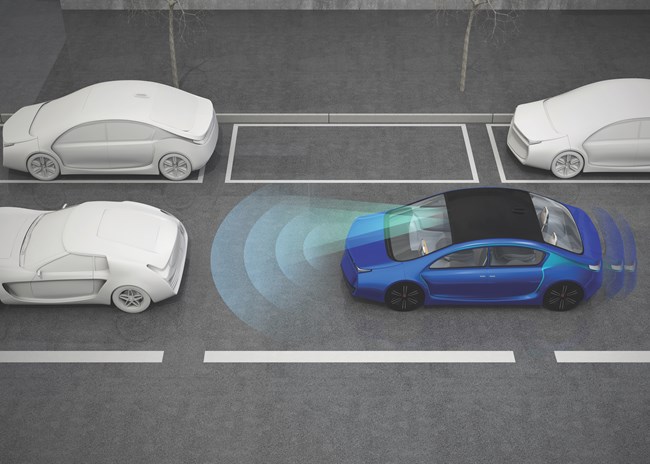
The start point for the best source of fleet information |
Play it safe with ADAS maintenance
Date: 30 March 2020 | Author: Sean Keywood

Good maintenance of advanced driver assistance systems (ADAS) is essential if they are to deliver the road safety benefits they are capable of.
That is according to a new report on fleet maintenance by road safety charity Brake's Global Fleet Champions campaign, with repair firm Autoglass.
Writing in the report, Autoglass national sales manager Jeremy Rochfort explains that while systems such as autonomous emergency braking, intelligent speed-assist and lane-keep assist are becoming increasingly common on fleets due to the safety benefits they provide, they also require a bespoke approach to maintenance.
He writes: "ADAS rely on a system of cameras, sensors and radars to detect the presence of other road users, obstacles and lane markings. For ADAS to work correctly, the cameras need to register their surroundings accurately. If a camera is misaligned by as little as one degree, it can have devastating consequences, seriously impeding the camera's view of the road ahead and potentially reducing the effectiveness of ADAS."
Rochfort highlights how cameras mounted on the windscreen can be affected by a change in the opaqueness of the glass or a shift in the angle of the holding bracket.
Car manufacturers recommend that cameras are recalibrated when the windscreen is replaced; if the camera is registered as faulty; if the engine control unit develops a fault; after a wheel alignment geometry adjustment; after a mechanical repair affecting vehicle geometry; and after a bodyshop visit or crash repair.
Rochfort cautions that the rapid adoption of ADAS has left many vehicle owners and drivers unaware of how to optimise the technology, and of its limitations.
He recommends that fleet managers who operate vehicles with ADAS installed inform drivers about ADAS fitted to their vehicles, discourage drivers from turning the systems off, introduce a recalibration process into vehicle maintenance checks, and use qualified technicians to maintain ADAS and recalibrate cameras when required.
Speaking to coincide with the release of the report, Rochfort said: "The adoption rate of ADAS in fleet vehicles is much higher, as fleet cars tend to be newer and come with up-to-date safety features.
"However, our research shows that keeping up to date with technology ranks low down on fleet decision-makers' priorities.?That is why we are committed to educating the fleet industry on the importance of ADAS calibration, and investing in our technical expertise and capabilities to ensure we can match the rising demand for these services."
Other topics covered in the report, which is available to download from the Global Fleet Champions website, include preventative maintenance, using telematics data to assess vehicle health, and choosing a bodyshop.
John Eastman, chair of the professional sector council at the Institute of Road Transport Engineers, writes that preventative maintenance, involving regular inspections to detect defects, and early signs of damage and wear and tear, can improve safety and reliability, as well as the well-being of drivers.
David Lawrence, channel marketing manager for EMEA at Verizon Connect, advises how telematics data can be used to identify and address weaknesses within a fleet, and highlight dangerous driver behaviours that can result in excessive wear-and-tear.
Finally, choosing a bodyshop is covered by Chris Weeks of the National Body Repair Association, who writes that managers should research providers carefully and check the qualifications of their staff for BS10125 accreditation.










